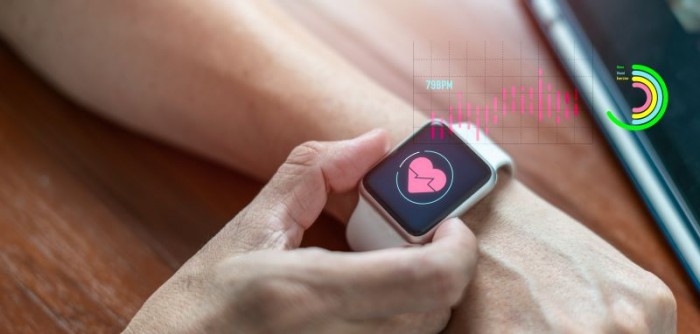mHealth App Fails to Improve Cardiac Rehab Patients’ Physical Activity
A study found that an mHealth app providing tailored text messages didn't boost six-month physical activity levels among cardiac rehab patients.

Source: Getty Images
- Adding an mHealth application to wearable devices used by cardiac rehabilitation patients did not improve their physical activity levels at six months post-intervention, according to a recent study.
Cardiac rehab programs aim to improve cardiovascular health following a heart attack, heart failure, angioplasty, or heart surgery, according to the American Heart Association. These programs include exercise counseling and training, patient education on heart health, and counseling to reduce stress.
The Michigan Medicine-led research team that conducted the Virtual AppLication-supported Environment To Increase Exercise (VALENTINE) study aimed to examine whether an mHealth app providing tailored text messages could help improve physical activity levels for low- and moderate-risk patients enrolled in center-based cardiac rehab and support those patients in maintaining increased physical activity levels over six months. Study results were published in npj Digital Medicine.
Researchers screened 940 patients for eligibility between October 23, 2020, and March 25, 2022. They included 220 patients in the primary analysis, of whom 109 received the mHealth intervention, and 111 were placed in the control group.
The intervention group was provided with an mHealth app, added to their wearable device, which enabled activity tracking and goal setting alongside providing tailored text messages to promote physical activity. On average, they received 163.1 activity text messages and 82.9 exercise text messages throughout the study.
The researchers found that the baseline six-minute walk distance was 492.1 meters for those in the control group and 510.8 meters for participants in the intervention group. At six months, the six-minute walk distance increased to 505.9 meters for the control group and 530.3 meters for the intervention group.
"In a univariate regression analysis, mean change in 6 min walk distance for the intervention group as compared to the control group was + 31.1 meters for Apple Watch users and −7.4 meters for Fitbit users, which was not statistically significant," the study authors wrote.
However, the mean change in six-minute walk distance at three months compared to baseline was statistically significant for Fitbit users in the intervention group but not for Apple Watch users. This change was not sustained for six months.
"Overall, this study suggests that the intervention did not have a long term impact on physical activity that was sustained over time but may have intermediate or potentially device-specific effects," said study first author Jessica R. Golbus, MD, clinical instructor of internal medicine-cardiology at University of Michigan Medical School, in the press release.
Additional analyses are needed to identify the types of text messages that are most likely to influence a particular group of patients.
"We will then use that information to design and deliver a future digital health intervention in which participants receive only the most effective text messages," Golbus said.
Despite the mixed results of the study, previous research has shown that digitally enabled cardiac rehab can be as effective as in-person care.
A study published in April 2022 revealed that virtual and hybrid cardiac rehab services were linked to similar patient benefits as in-person services.
The researchers collected information on patients enrolled in cardiac rehab between October 2019 and May 2021. They separated data collected during the study period into in-person, hybrid, and virtual groups to compare outcome measures.
The researchers found that cardiac rehab delivered via hybrid and virtual care modalities resulted in similar clinical benefits for patients as in-person care. Blood pressure control, walking ability, and anxiety levels were similar among the hybrid and virtual care groups and the in-person group.
